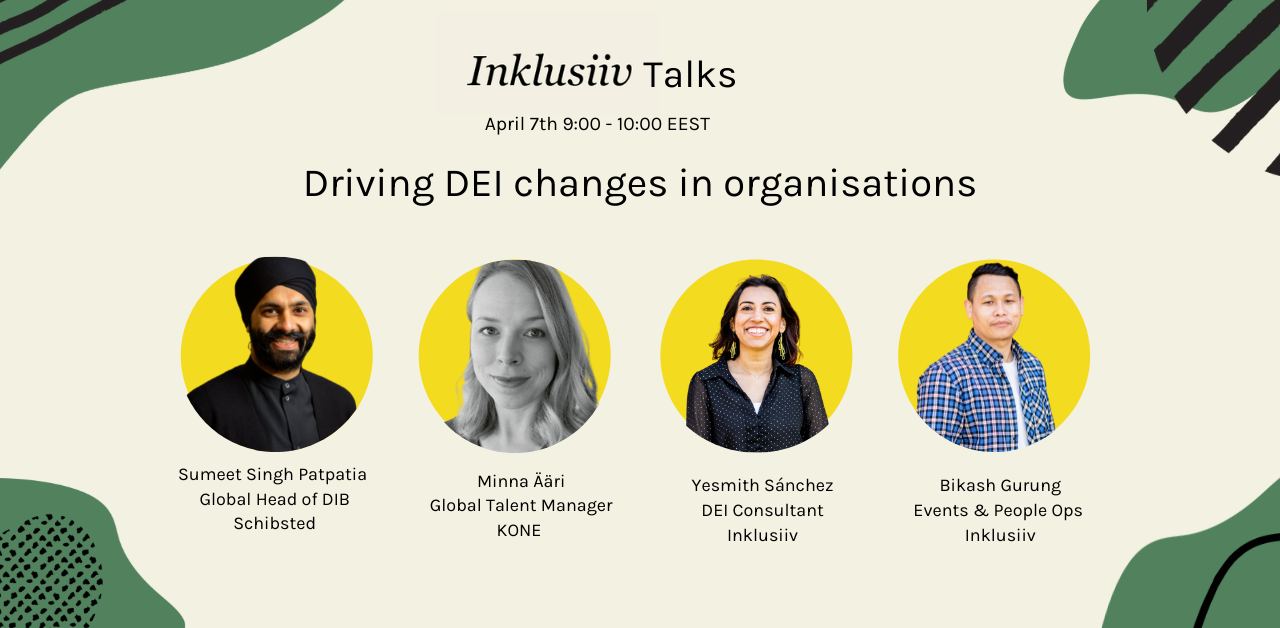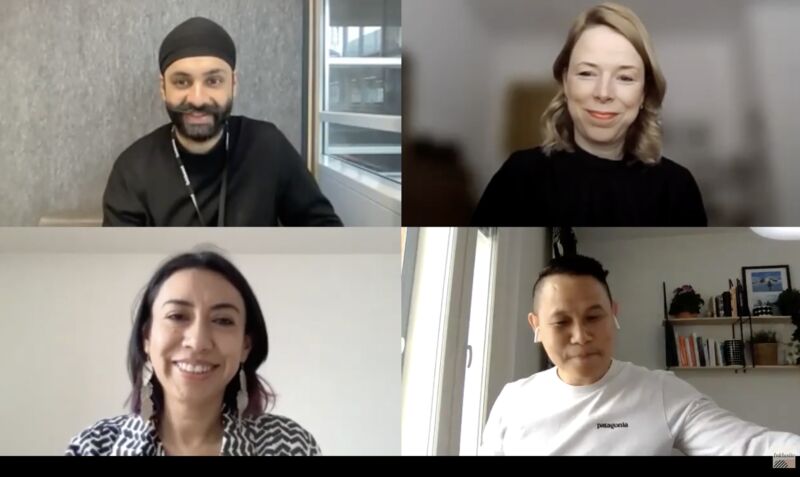How to drive DEI change in organizations is a hot topic, yet many are still overwhelmed and confused about how to ignite real action. That’s why Inklusiiv hosted an online event to explore this topic further.
The diverse speaker lineup revealed new insights into how companies from various industries are driving DEI change. The speakers included Sumeet Singh Patpatia, Head of DIB at Schibsted, Minna Ääri, Global Talent Manager at KONE, Yesmith Sánchez, DEI Consultant atInklusiiv, and Bikash Gurung, Head of Events & People Ops at Inklusiiv.

Common challenges and barriers preventing DEI change
Various barriers hold organizations back from driving DEI change. Most notably, many see DEI and its benefits as a black box. The concept seems abstract and its benefits set so far in the future. Because of this perception, it is difficult to know what to prioritize and how to embed DEI into the corporate strategy and every process. Moreover, there are typically only a few people proactively driving DEI forward. But real change needs cooperation from every department and branch of the organization.
To create meaningful change, DEI needs to start with leaders. Yet a common challenge is leaders lack awareness and competence, which translates into having blind spots and falling short in empathy and direction. This can make it hard for leaders to connect with these issues and grow motivated to act.
Lastly, another struggle is legislation and regulations differ worldwide. Because of the discrepancies between nations, it can be challenging to unify the DEI message. DEI surveys are a fantastic way to understand the current state of DEI in an organization. However, because of data privacy regulations and concerns for anonymity, barriers arise in asking for and collecting sensitive information. Hence, it can be challenging to address DEI topics at the same pace and intensity in every location.
Key components needed for DEI transformation
There are fundamental elements that allow organizations to achieve success with their DEI efforts. These include:
Diversity and inclusion data: By measuring the state of DEI in an organization, a long-term vision and goals can be identified. The data is not to serve only a one-time purpose. Instead, it should be followed up with actions.
Communications and training to ensure capability and commitment. DEI action can happen, only once the groundwork of awareness has been laid. Securing commitment from especially the leadership team can be very powerful. Leaders can motivate the rest of the organization to get on board. Employee resource groups as well as training on topics related to DEI such as unconscious biases and discrimination are a great way to get the organization as a whole more aware of these topics.
Resources are needed in every project, and DEI is no exception. Advancing DEI is not easy, and this requires a team with a specific skill set and dedication – it’s not something that can just happen alongside other things without concentrated effort. Like any change agenda, DEI initiatives require time to get the results you hope for. Lastly, DEI work will need some budget to allow for real change to happen.
Strategy is imperative to ensuring success. DEI needs to be embedded into the long-term strategy. The strategy ought to be supported with a clear roadmap with short and long-term goals alongside a defined and governed project team. But while DEI needs orchestrated efforts; organizations must be willing to experiment and fail in order to learn.
Solutions and Best Practices to Drive DEI Change
A strong diversity and inclusion strategy can help your organization attract top talent and drive innovative results. Here are the best practices that actually work:
- Increase the awareness that exists within the organization, particularly the leadership
- Measure the state of DEI in the organization with a DEI survey
- Create a roadmap based on those measurements and where you want your organization to be.
- Make a plan that is realistic yet ambitious
- Prioritize doing both big and small actions.
- Amplify employees’ voices by starting employee resource groups.
To learn more about how you can drive DEI change, check out our resource bank or watch the recording of the event from here.


